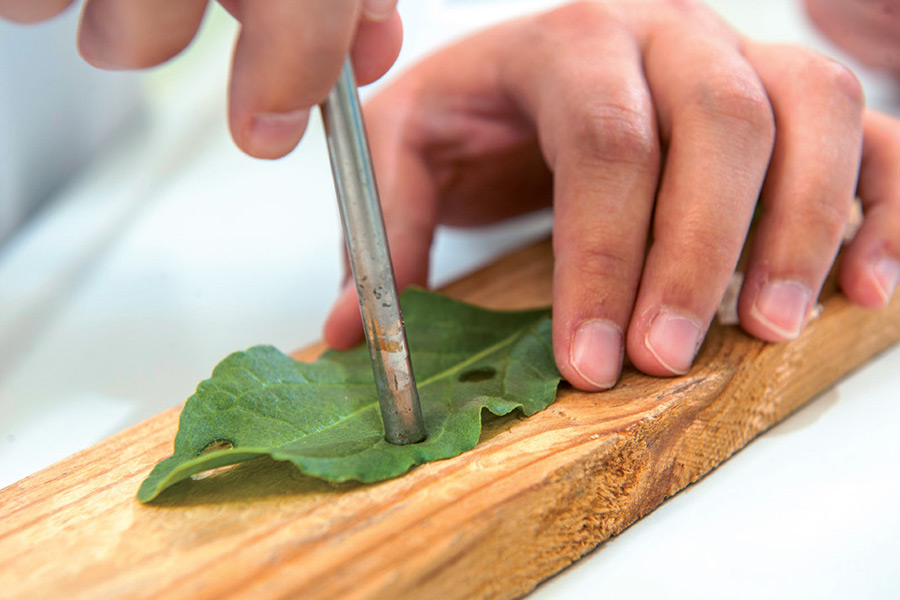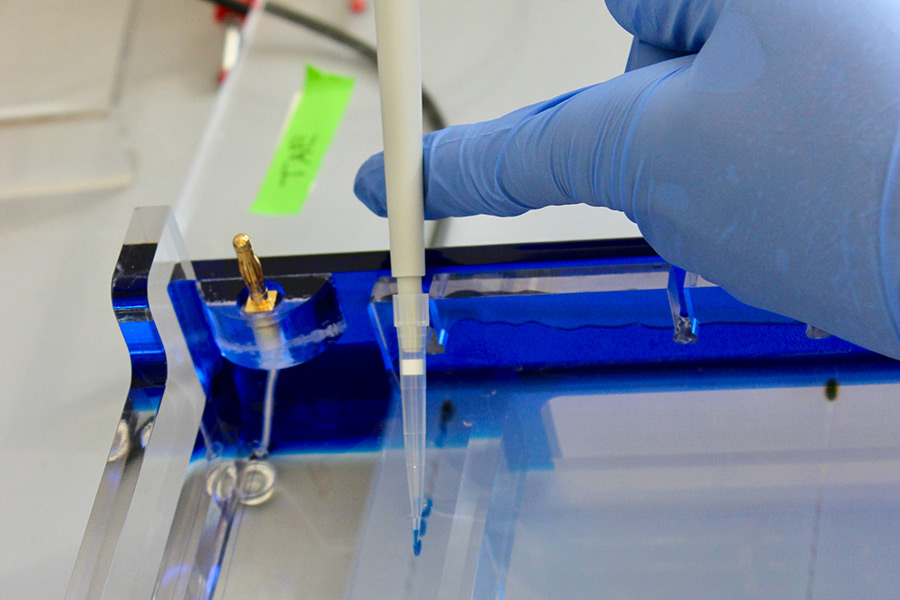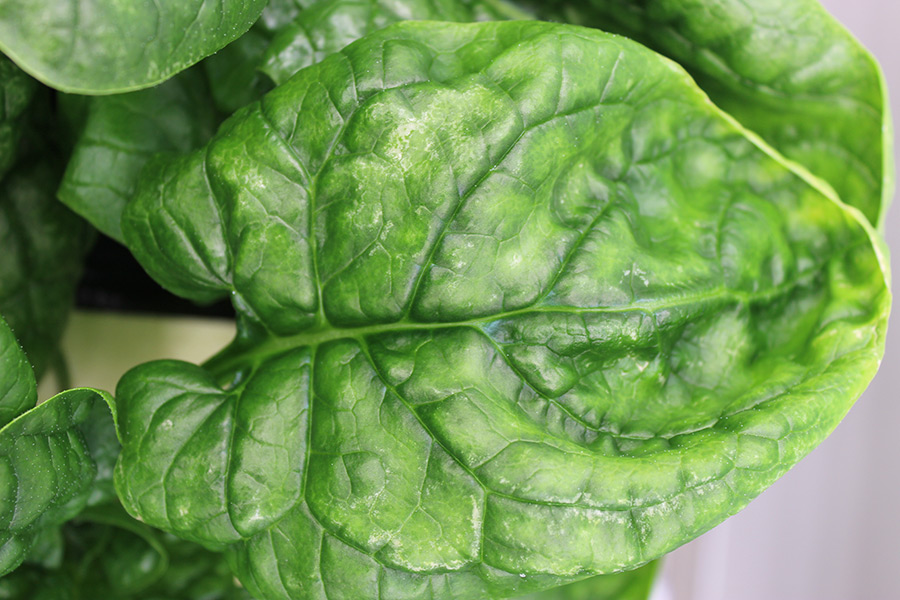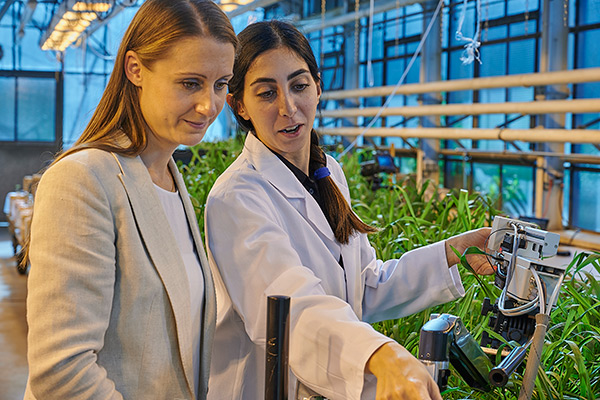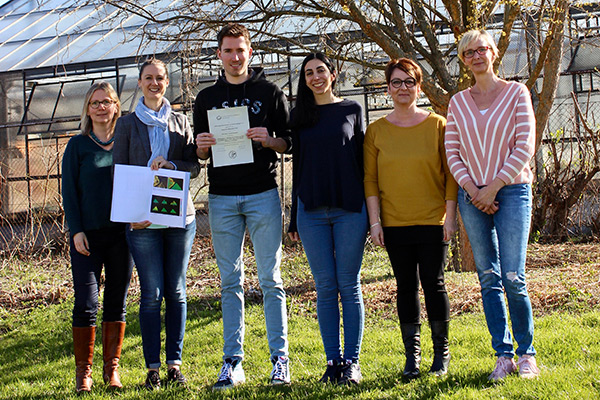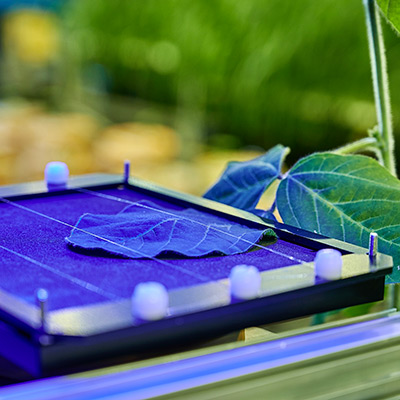Research
Unfavorable environmental conditions such as nutrient deficiency, lead to restrictions in the photosynthetic capacity. Under such conditions, the absorption of light in the light harvesting complexes of the photosystems is excessive, i.e., the available energy cannot be consumed by the photosynthetic processes. Therefore, the excessive energy might react with ground state molecular oxygen which leads to production of reactive oxygen species (ROS) inside the photosynthetic machinery. ROS, mainly singlet oxygen, superoxide and hydrogen peroxide, mediate photooxidative damage to the photosystems. When excess energy conditions persist over a prolonged period of time, the photosynthetic apparatus is destroyed. This might lead to photoinhibition which is a sustained reduction of the photosynthetic capacity.
To prevent photoinhibition, photoprotective mechanisms have evolved in plants. These mechanisms comprise movement of leaves and chloroplasts, photorespiration, cyclic electron flow around photosystem I, screening of photoradiation, thermal energy dissipation of absorbed light energy, and detoxification of reactive oxygen species. The latter two mechanisms are in focus of the research at IAPN.
Dissipation of absorbed light energy as heat energy is induced by the molecular mechanism of non-photochemical quenching (NPQ) and can be determined from measurements of chlorophyll fluorescence. NPQ is considered a photoprotective mechanism because it helps to release the excitation energy absorbed in the light-harvesting complexes of photosystem II as heat, thus protecting the photosynthetic system from an excessive amount of excitation energy. In this process, numerous complex processes take place in the chloroplast, including the xanthophyll cycle, which involves the conversion of violaxanthin to zeaxanthin by the enzyme violaxanthin de-epoxidase (VDE) and the protonation of the photosystem II protein subunit PsbS.
Detoxification of reactive oxygen species, the production of which is accelerated under conditions of excess light, takes place not only in chloroplasts, but also in peroxisomes and mitochondria of plant cells. The reactive oxygen species are converted to non- or less-toxic molecules by enzymes such as superoxide dismutase, ascorbate peroxidase, glutathione reductase and catalase. Evaluation of the scavenging capacity in plants is achieved by in vitro analysis of the enzyme activities by photospectrometry, and transcript abundance of the respective gene by molecular methods.
The plant nutrient magnesium (Mg) plays crucial roles in photosynthetic processes. Being the central atom in chlorophyll molecules, it contributes to light harvesting. The CO2 fixation is strictly dependent on the presence of Mg as it activates the enzyme Rubisco. Furthermore, Mg is inevitable for ultrastructure formation of chloroplasts which is necessary for efficient functioning of the light reactions in the photosynthesis. Besides these functions, Mg is involved in many more cellular functions like enzyme activation and energy metabolism.
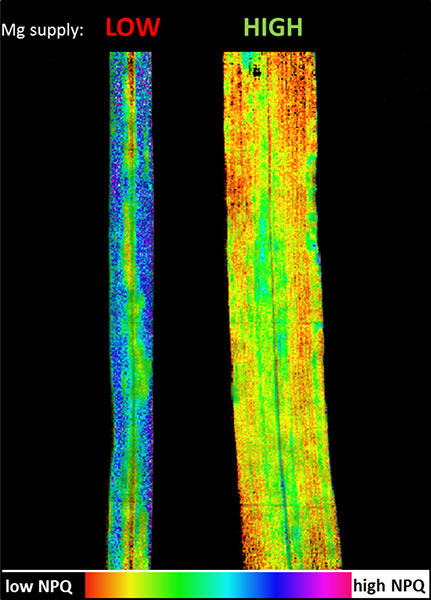
Measurement of non-photochemical quenching (NPQ) by chlorophyll fluorescence: Due to reduced assimilation capacity, light energy is in excess to what can be used in photosynthesis and can damage the plant. To protect leaves from damage, the excess light energy is converted to thermal energy, which is assessed as NPQ. The leaf on the left suffers magnesium deficiency and dissipates a higher proportion of energy into heat, indicated by more blue and purple colors. (Source: Tränkner)
Plants with Mg deficiency suffer photooxidative stress as light energy reaching the photosystems is excessive and photoprotective mechanisms are enhanced. The research aims at understanding how the photosynthetic processes are affected at a range of Mg concentrations and corresponding how photoprotection is affected by Mg supply.




